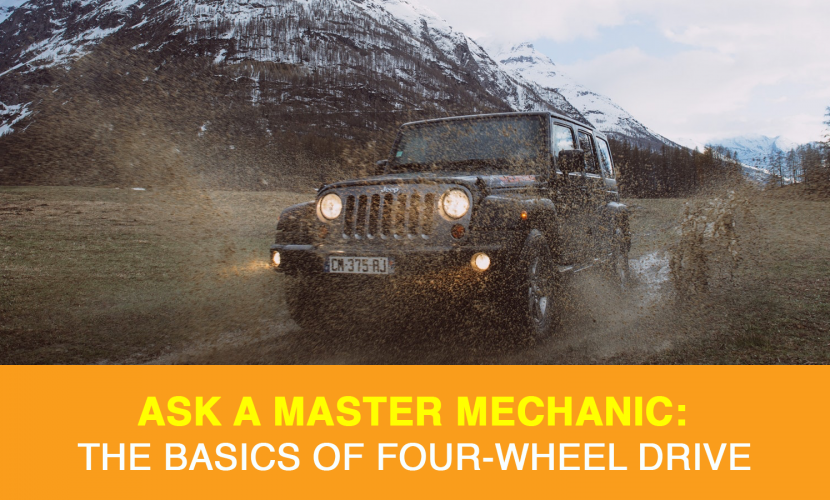
Ask A Master Mechanic: The Basics of Four-Wheel Drive
The Basics of Four-Wheel Drive
Though available on many vehicles built for off-roading and driving in difficult conditions, the proper use of four-wheel-driving is largely misunderstood. At Master Mechanic, we are all too familiar with the misuse of this highly-efficient driving tool. When used properly, AWD can improve your driving ability and help you get you out of sticky (or slippery) driving conditions.
Four-wheel drive allows the front and back wheels to turn at different, complementary speeds based on an internal control system. 4-wheel drive (4WD) was created for low-traction driving conditions. This means anything from slippery snow to steep hills and mud.
Now that we have that basics covered, let’s talk about different 4WD options and how to get the most out of them based on driving conditions.
Understanding 4WD Systems
Before we get into talking about 4WD we have to first talk about 2WD. This involves the vehicle’s power being sent to the back wheels for regular road conditions. It is just as important to understand when and how to use your 4WD options as it is when not to use them. Using 4WD in situations where it is not necessarily can lead to unnecessary damage to your vehicle and costly repairs. If the road is even and dry, like a regular paved road on a day with no precipitation, you’re betting off using 2WD.
4WD Auto
4WD auto is the most common setting in today’s vehicles. It means that your car will stay in 2WD until your vehicle deems it suitable to switch into 4WD based on road conditions. Once the internal control system detects the wheel slipping, 4WD is activated and some of the more advanced internal control systems are also engaged. 4WD auto systems are not recommended for serious off-roaders as it limits control of your 4WD system once it is engaged. To get a sure idea of what kind of 4WD system is built into your vehicle, be sure to check the owner’s manual.
4WD High
The next option we’re looking at is 4WD high. The easiest way to remember how and when to use 4WD high is – high speeds, low traction. When you’re able to maintain speeds over 40 km/h but are in need of some extra support, 4WD high is your best bet. These conditions include driving through sand, gravel, snow and wet conditions that are not particularly steep.
4WD Low
4WD low is best used for low speeds, low traction. Staying below 40 km/h will not provide more traction per se but will cause less strain on your vehicle and provide more torque to get through difficult driving conditions. This should be used at very low speeds to help creep through boulders, thick mud, deep sand, steep slopes and shallow waters. The use of this feature is primarily reserved for true off-roading situations.
Using your 4WD system can be easy once you understand the basics. Be sure to check your owner’s manual to identify what system your vehicle is equipped with. To summarize, here are some helpful tips for 4WD driving:
- Do not engage your 4WD system in flat, dry scenarios. This could cause damage to your vehicle.
- 4WD High; use for high speeds, low traction. For use above 40kmph (25mph) for added control in non-steep, slippery situations like snow mud and rain.
- 4WD Low; use for low speeds, low traction. For use below 40kmph (25mph) in steep, difficult slippery situations like thick mud, shallow waters, boulders and steep slopes (common off-roading scenarios).
- If you haven’t used 4×4 in a while consider getting your car serviced to ensure everything works as it should.
If you have any questions about your AWD system, don’t hesitate to contact your local Master Mechanic. We’re here to help!

